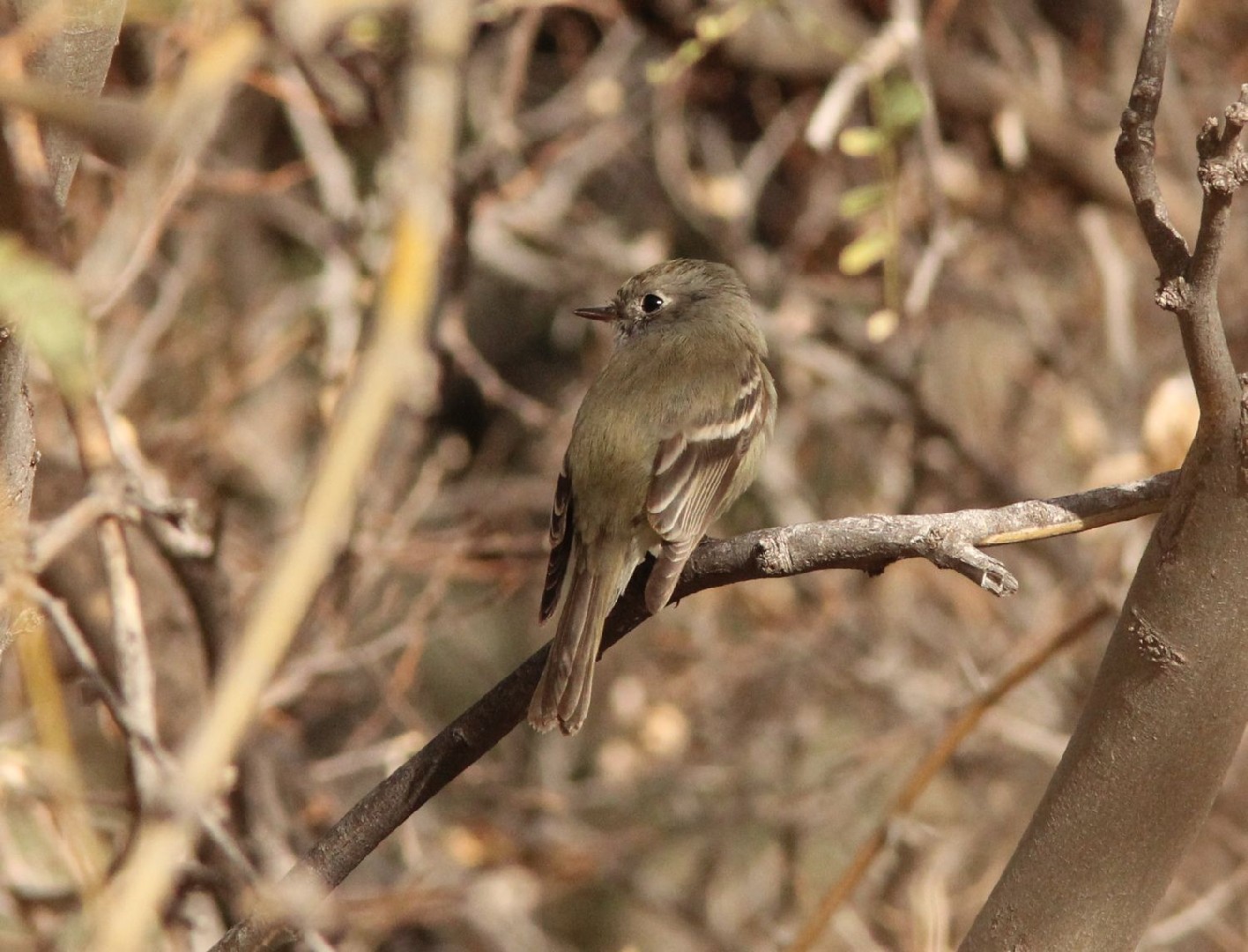Hammond's Flycatcher
A species of Empidonax flycatchers Scientific name : Empidonax hammondii Genus : Empidonax flycatchers
Hammond's Flycatcher, A species of Empidonax flycatchers
Botanical name: Empidonax hammondii
Genus: Empidonax flycatchers
Content
Description General Info
 Photo By Caleb Putnam , used under CC-BY-SA-2.0 /Cropped and compressed from original
Photo By Caleb Putnam , used under CC-BY-SA-2.0 /Cropped and compressed from original Description
Adults are 12–14 cm long (4.7-5.5 in), span about 22 cm (8.7 in) across the wing and weigh 8-12 g (0.3-04 oz). They have grayish-olive upperparts, darker on the wings and tail, with whitish underparts; they have a conspicuous white eye ring, white wing bars, a small bill and a short tail. The breast is washed with grey and the sides of the belly with yellow. Female usually have a shorter, wider bill compare with male's. Immature are similar to adults, but have broader wing bars and are more buff. Many species of Empidonax flycatchers look closely alike. Hammond's flycatchers are mainly confused with Dusky (E. oberholseri) and Gray (E. wrightii) flycatchers, which are similar in color and size and have an overlapping range. The best way to distinguish the Hammond's flycatcher is by its call, breeding habitat and/or range. 
Size
14 cm (5.5 in)
Life Expectancy
7 years
Nest Placement
Tree
Clutch Size
3 - 4 eggs
Incubation Period
1 brood
Number of Broods
15 - 16 days
Nestling Period
17 - 18 days
Feeding Habits
Hammond's Flycatcher primarily consume insects, including caterpillars, butterflies, moths, various beetles, flies, and bugs. Hammond's Flycatcher capture prey midair, pluck from vegetation by fluttering, hovering, or sallying. Foraging shifts vertically with the season, from higher to lower strata. Prey is eaten on perches, sometimes after wing removal or whacking.
Habitat
Hammond's Flycatcher chiefly resides in mature and old-growth coniferous and mixed forests of western North America, with abundant fir, pine, Douglas-fir, and aspen. These habitats are characterized by dense canopies and undergrowth, including species such as tanoak and maple, suited to cool, moist environments and high altitudes. During migration and on wintering grounds in Mexico and Central America, hammond's Flycatcher frequents similar cool montane forests.
Nest Behavior
The female hammond's Flycatcher selects and prepares the nest site before constructing the nest alone. Nest building occurs well before the 2-4 eggs are laid. Both parents share in feeding the young, but only the female incubates the eggs.
Nest Characteristics
Hammond's Flycatcher's nest is a compact cup built on a limb, well away from the trunk, typically 25 feet up in a conifer but can be up to 50 feet. It measures approximately 3.4 inches across and 2.1 inches tall. Construction materials include grass, plant fibers, lichen, bark, hair, leaves, rootlets, feathers, or string, all bound with spiderweb.
Dite type
Insectivorous
General Info
Feeding Habits
Bird food type
Bird Feeder Type

Platform
Sounds
Call
Recording location: United States
Song
Recording location: United States
Song
Recording location: United States
Behavior
Hammond's Flycatcher exhibit territorial behavior during breeding season, each male claiming an area of about 2.6 acres. They are active throughout the day, the males singing persistently to attract mates. Once a female shows interest with soft calls, the male responds with calls and fluttering wings. These birds are monogamous, and while only the female incubates the eggs, both parents participate in feeding the offspring. Territory defense is crucial for hammond's Flycatcher, involving aerial pursuits and sometimes physical confrontations to protect their nesting space from conspecifics and other 'empids.'
Distribution Area
The Hammond's flycatcher is a migratory species, breeding in Western North America and wintering in Mexico and Central America. 
Species Status
Not globally threatened.
Scientific Classification
Phylum
Chordates Class
Birds Order
Perching birds Family
Tyrant flycatchers Genus
Empidonax flycatchers Species
Hammond's Flycatcher